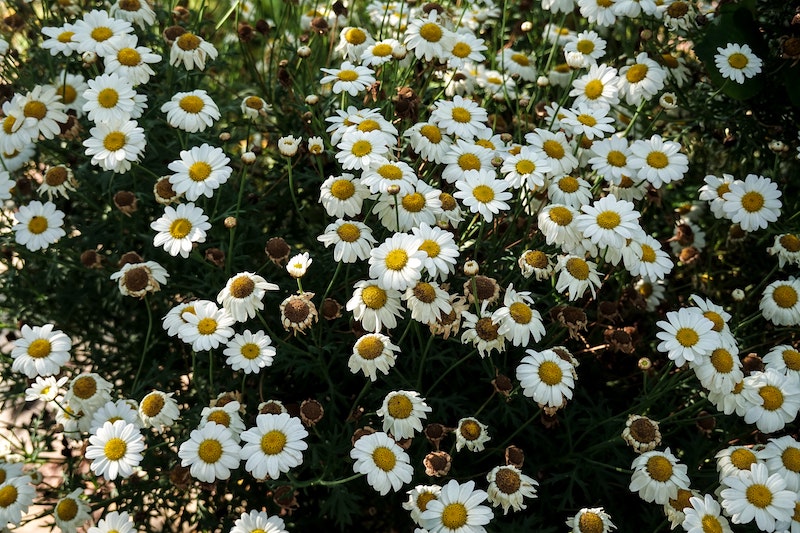Shasta Daisies are a popular and easy-to-grow perennial flower. In the winter, protect them from extreme cold and ensure they have proper drainage to prevent the roots from rotting. This is especially important for growing zones where ice and snow are expected. It is important to remember that while Shasta Daisy is a hardy plant, some cultivars are more tender and may be more susceptible to extreme winter conditions.

Protecting Shasta Daisy in Winter
After the frost, Shasta Daisy foliage will begin to die back and turn brown. You can cut back the spent foliage and add a layer of mulch around the base of the plant. The mulch this will help to insulate the roots and protect them from frost heaves during cold weather. Overall, Shasta Daisies and frost hardy and should overwinter without much extra care.
Cutting Back Shasta Daisy For Winter
To prepare your Shasta Daisy for winter, cut back the plant in the fall or early spring to remove any damaged or diseased foliage and encourage new growth in the spring. To cut back the plant, use a pair of clean, sharp scissors or pruning shears to trim the stems back to about 6 inches above the ground. After cutting back the plant, remove any debris from the area to prevent the spread of disease.

Shasta Daisy Winter Care in Pots
If you have your Shasta Daisy growing in a pot, you should take a few additional steps to ensure its survival during the winter months. First, ensure the pot has proper drainage to prevent excess moisture from accumulating. Remove pot saucers and set the pot on bricks or pot feet to keep it off the ground. Next, move the pot to a location protected from harsh winter winds, such as a sheltered porch or garage. Next, consider wrapping the pot in burlap or bubble wrap for added insulation. Finally, be sure the pot receives moisture during the winter, but do not let the soil become too wet.

Watering Shasta Daisy in Winter
Proper drainage is essential for the health and survival of your Shasta Daisy during the winter months. While it is important the soil doesn’t dry out completely, standing water or boggy conditions can lead to root rot and the eventual demise of your plant. If your plant is sitting in soggy soil over the winter, you will need to move it to a better site immediately. Generally, your Shasta Daisy will not require supplemental water during the winter. If you live in a climate with very dry winters, water your perennial plants when the temperature is above freezing to keep the soil from drying out completely.
Growing Shasta Daisy Indoors
Shasta Daisy is not the best candidate for growing indoors. It requires bright sunlight and may become leggy and sickly if grown under indoor light. It also requires a period of dormancy in winter where the foliage dies back and provides little interest. If you would like to shelter your potted Shasta Daisy over winter, choose a non-heated space like a garage or greenhouse. When spring arrives, set your plant back outside so it can resume growth.
Steps To Care For Shasta Daisy in Winter
By following these steps, you can help your Shasta Daisy survive during the winter season.
Step 1 - Provide proper insulation using mulch or a winter plant cover
Step 2 - Ensure good drainage through the winter
Step 3 - Remove any dead or damaged foliage
Step 4 - Cut back the plant by early spring to encourage new growth
Step 5 - Protect potted plants from extreme cold and wind by placing them in a sheltered location
 |
Author Chris Link - Published 2-3-2023 |
